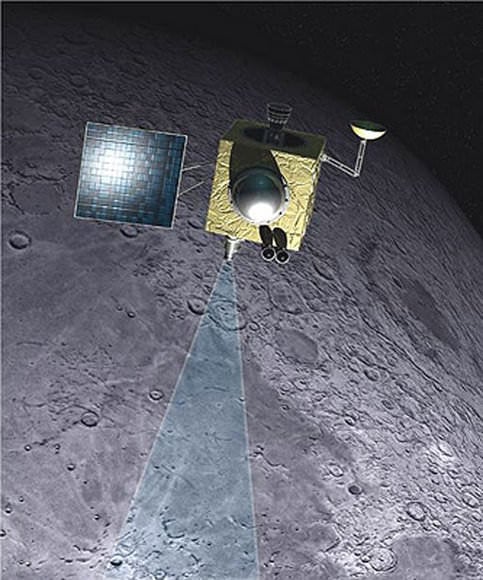[/caption] The Chandrayaan 1 spacecraft, India's moon orbiting satellite was almost lost earlier this year, Indian Space Research Organization revealed, as the star tracking system overheated and malfunctioned. The system helps determine and maintain the spacecraft's orientation. Engineers were able to patch in the gyroscopes and another instrument to help maneuver the spacecraft, but they are not sure how long this jury-rigged system will work. At this point, determining the spacecraft's future might be difficult, and differing statements from various officials reflect that.
"We are not sure how long we will be able to sustain it. The life of Chandrayaan-I designed for two years may be reduced," said ISRO spokesman S. Satish.
ISRO chief Madhavan Nair said the star tracking system cannot be recovered, but he dismissed suggestions that the sensor's failure might reduce the life span of the spacecraft.
"The life (of the spacecraft) is not dependent on this instrument. This instrument is used only for orientation of the spacecraft," he said. "The sensor cannot be recovered at this stage and we hope that the remaining part of this mission will be completed."
Chandrayaan-1 launched in October 2008 and suffered from overheating shortly after it began operations in lunar orbit in November, but the ISRO was able to change the spacecraft's orientation and cut down on the amount of time the instruments were used to compensate.
In May 2009, however, officials unexpectedly raised the orbit of the spacecraft. At that time officials said they had completed mission objectives from 100 km above the moon and raised the height of the spacecraft to 200 km to enable imaging lunar surface with a wider swath. But reports say that May is when the star tracker system malfunctioned, as well.
Nair said the star sensor is suspected to have failed because of "excessive radiation" from the Sun. He said gyroscopes are not susceptible for the kind of radiation that the sensor was subjected to. "So, we hope it will survive the remaining mission duration".
He added more than 90 percent of the two-year mission's objectives have already been achieved.
ISRO Scientists hope the Chandrayaan project will boost India's capacity to build more efficient rockets and satellites, especially through miniaturization, and open research avenues for young Indian scientists. India plans to follow the Chandrayaan, which means "moon craft" in Sanskrit, by landing a rover on the moon in 2011.
Source: The Hindu
 Universe Today
Universe Today
